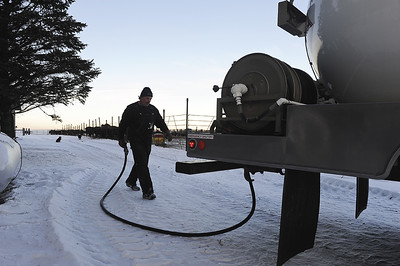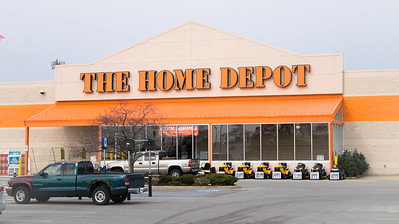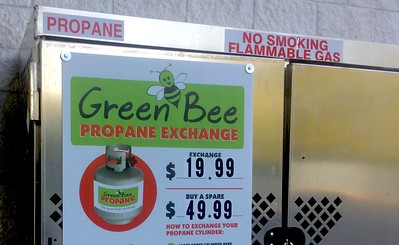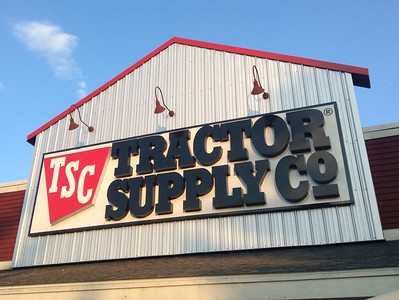
Have you ever found yourself in the predicament of running out of propane right when you needed it the most? Perhaps you were in the middle of a crucial cooking session or preparing to warm up your home on a particularly cold night.
In such instances, the phrase “Propane Refill Near Me Open Now” likely becomes your immediate online search mantra. The urgency of finding a reliable, open-now propane refill station near you cannot be overstated.
As essential as propane is for heating, cooking, and other uses, it’s equally vital to know where and how to refill your propane tank, especially at a moment’s notice. This article serves as a comprehensive guide to finding propane refill stations near you, no matter the time.
From traditional methods to modern tools, we explore various strategies for locating these vital stations. Additionally, we delve into the pros and cons of different refill options, as well as safety tips and average costs involved.
By the end of this article, you’ll be well-equipped to find a propane refill station whenever you need one, ensuring you’re never left in a lurch due to an empty propane tank.
Read this: How to Find a Propane Cylinder Exchange Cabinet?
Finding Propane Refill Locations Near You
Traditional Methods of Locating Propane Refill Stations
Even before the advent of internet and smartphone technology, people had ways to locate their nearest propane refill stations. These traditional methods still hold value today:
- Local Directory: Local phone books or business directories often list propane suppliers in the area. This can be a quick way to get the contact information of nearby refill stations.
- Word of Mouth: Asking friends, neighbors, or colleagues can be a good way to find local suppliers. They might be able to recommend a reliable propane refill station based on their experiences.
- Local Ads: Keep an eye on local newspapers, magazines, or community bulletin boards. Propane suppliers often advertise their services in such places.
Propane Refill Stations Open Now
Importance of Knowing 24/7 Propane Refill Stations
Knowing a propane refill station that operates 24/7 is crucial for emergencies and unexpected runouts. Running out of propane can cause a sudden halt to heating, cooking, and any other activities that rely on it. In cold weather conditions, this could potentially be a matter of safety and not just convenience. Having information about a propane refill station that’s open round the clock can be a lifesaver, providing you with a reliable source of propane whenever you need it.
How to Find Propane Refill Stations Open Now
With today’s technology, finding a propane refill station open at any given time is relatively easy. Here are a few methods:
- Online Search: A simple search on the internet with terms like “24/7 propane refill stations near me” can yield helpful results.
- Mapping Services: Services like Google Maps not only show you the locations of propane refill stations near you but can also provide information about their hours of operation.
- Mobile Apps: Certain mobile applications dedicated to finding gas or propane stations can also provide real-time information about locations open for service.
- Direct Contact: If you already have a preferred supplier, a quick phone call or a check on their website can confirm if they offer 24/7 services.
Read this article: Who Does Propane Tank Exchange Near Me?
Examples of Nationwide Chains That Offer 24/7 Propane Refill
There are several nationwide chains known to offer round-the-clock propane services, though availability can vary by specific location. Two such examples are:
- U-Haul: Many U-Haul locations offer 24/7 propane refill services. They also offer the convenience of self-service for customers, with instructions provided on-site for safe refilling.
- AmeriGas: As one of the largest propane suppliers in the United States, AmeriGas has many locations that provide 24/7 services, including propane refilling. They also operate propane exchange locations, which can be found at many convenience stores and gas stations.
Remember to verify the hours of operation with your local outlets, as not all locations of these chains may offer 24/7 services.
Tips for Choosing the Right Propane Refill Station
When choosing a propane refill station, consider the following factors:
- Hours of Operation: Choose a station with hours that fit your schedule. Some locations offer 24/7 services, which can be a lifesaver in emergencies.
- Price: Propane prices can vary from one station to another. It’s wise to compare prices at different stations to ensure you’re getting a good deal.
- Reputation: Check the reputation of the refill station. Online reviews and ratings can provide insight into the experiences of other customers.
- Services: Some stations offer additional services like tank inspections or automatic refills. If these services are important to you, look for a station that offers them.
- Safety Standards: The refill station should follow strict safety standards. Proper handling of propane tanks and adherence to safety guidelines is crucial.
- Proximity: Lastly, consider the station’s proximity to your home or business. While it’s not the only factor, a conveniently located refill station can save you time and travel costs.
What to Expect When Refilling Your Propane Tank
The Process of Refilling a Propane Tank
Refilling a propane tank is a straightforward process, although it must be handled by a trained professional for safety reasons. Here’s what the process generally looks like:
- Inspection: Before the refill begins, the attendant will inspect the tank for any visible damage, leaks, or signs of excessive wear and tear. A damaged tank may be unsafe to refill.
- Connection: Once the tank has passed inspection, the attendant will connect it to a large propane dispenser tank using a hose. This hose will allow propane to flow from the dispenser tank into your tank.
- Filling: The attendant will open the valve, allowing propane to flow into your tank. The tank is typically filled to about 80% of its capacity to allow for expansion of the propane gas.
- Disconnecting and Checking: After filling, the attendant will close the valve, disconnect the hose, and check the tank for any leaks.
Safety Guidelines During Refill
Safety is paramount during a propane refill. Here are some guidelines that are typically followed:
- Do not smoke or ignite any flames near the refill area.
- Stay clear of the refill area unless instructed otherwise by the attendant.
- Always ensure that the propane tank is secured in your vehicle before transportation. The tank should be placed in a well-ventilated area and must not be left inside a hot vehicle.
Payment Options and Average Costs
Propane refill stations usually offer several payment options, including cash, debit cards, and credit cards. Some might also offer contactless payment methods for added convenience.
The cost to refill your propane tank can vary based on the current price of propane, which fluctuates due to factors such as supply, demand, and the time of year. As of my knowledge cutoff in September 2021, the average cost to refill a 20-pound propane tank—commonly used for grills and heaters—was around $15 to $20, though this can vary significantly by region and provider. For the most accurate and current pricing, it’s best to check directly with your local propane refill stations.
Alternatives to Refilling Propane Tanks
Propane Delivery Services
One increasingly popular alternative to visiting a propane refill station is utilizing propane delivery services. Many companies offer these services, delivering propane directly to your home or business. Some even provide automatic delivery options, estimating your propane usage and scheduling deliveries accordingly, so you never run out. This option is particularly beneficial for those with heavy propane usage or those who find it inconvenient to transport propane tanks.
Propane Tank Exchange Programs
Propane tank exchange programs offer another convenient alternative. These programs, often available at local grocery stores, hardware stores, or gas stations, allow you to exchange your empty propane tank for a pre-filled one. This can be a quick and easy solution, especially if you need propane immediately.
Pros and Cons of Each Alternative
Like any service, both propane delivery and tank exchange programs come with their own set of pros and cons.
Propane Delivery Services:
Pros:
- Convenience: You don’t need to leave your home or business, saving you time and effort.
- Automatic Delivery: With automatic delivery, the supplier estimates your propane usage and schedules deliveries, reducing the risk of running out.
Cons:
- Delivery Fee: Some companies may charge a delivery fee, especially for smaller orders.
- Schedule Dependence: You’re dependent on the supplier’s delivery schedule, which could be problematic if you run out of propane unexpectedly.
Propane Tank Exchange Programs:
Pros:
- Speed and Convenience: Simply drop off your empty tank and pick up a full one. There’s no waiting for delivery or refilling.
- Accessibility: With many grocery stores, gas stations, and hardware stores offering this service, it’s often easy to find a nearby exchange location.
Cons:
- Partially Filled Tanks: Tanks from exchange programs are often not filled to maximum capacity. You may receive less propane than you would with a direct refill.
- Tank Condition: You have no control over the condition of the exchanged tank. Some may be older or in worse shape than the tank you’re turning in.
In choosing between these alternatives, consider your specific needs, schedule, and budget. Each option has its benefits and drawbacks, and the best choice will depend on your unique circumstances.
Propane Refill Tips and Tricks
Best Times to Refill Your Propane Tank
Timing is crucial when it comes to refilling your propane tank. The best time to refill is before your tank is completely empty. Waiting until the last minute could leave you in a bind, especially if you have a sudden, unexpected need for propane. Ideally, you should consider refilling when your tank is around one-fourth full.
Seasonality also plays a significant role in propane prices. Typically, prices drop in the summer months when demand is lower, only to rise in the winter when heating needs increase. Therefore, refilling your tank during the off-peak season can be a cost-effective strategy.
How to Store Extra Propane Tanks Safely
Having extra propane tanks on hand can be a lifesaver during emergencies, but they must be stored safely to prevent accidents. Here are some safety measures to consider:
Store propane tanks in a well-ventilated area, away from living spaces. This could be an open-air storage shed or a detached garage.
Never store propane tanks in enclosed spaces like basements or attics where propane leaks could accumulate and pose a serious risk.
Keep propane tanks upright at all times. This prevents the pressure relief valve from being blocked and allows it to work correctly.
Keep tanks away from heat sources, including direct sunlight, to prevent excessive pressure build-up.
Regularly check stored tanks for leaks. This can be done by applying soapy water to the tank’s surface and watching for bubbles, which would indicate a leak.
How to Ensure Your Propane Lasts Longer
Optimizing your propane usage can help your supply last longer. Here are some ways to ensure your propane lasts longer:
- Regular Maintenance: Maintain your propane-powered appliances regularly to ensure they’re operating at their most efficient. This reduces wastage and helps your propane last longer.-
- Insulate Your Home: Proper insulation can help retain heat and reduce the need for excessive heating, thus conserving your propane supply. Insulate your windows, doors, attic, and any other areas where heat might escape.
- Monitor Your Usage: Keep a close eye on your propane usage. If you notice a sudden increase, it could indicate a leak or an inefficient appliance.
- Use Energy-Efficient Appliances: If possible, opt for energy-efficient appliances that use less propane. This could include propane heaters with an Energy Star rating.
- Adjust Thermostat Settings: You can save propane by adjusting your thermostat settings. Lowering the thermostat by just a few degrees in winter or raising it slightly in summer can lead to significant propane savings over time.
Conclusion
As we reach the end of this comprehensive guide, it’s clear that the significance of propane and the need for a reliable refill source can’t be understated. From heating homes and powering appliances to running commercial establishments, propane is an indispensable part of many lives. Having a convenient propane refill station nearby or knowing alternatives can save you from unexpected runouts and the inconveniences they bring. With modern tools, finding a propane refill station, especially one that’s open now, is easier than ever.
However, it’s not just about finding a refill station. Understanding your propane usage, knowing when to refill, and following safety guidelines are equally important. It’s also worth exploring alternatives like delivery services and tank exchange programs for added convenience. Remember, the more you know about your propane usage and refill options, the better prepared you’ll be for any situation.
In a world increasingly dependent on energy, propane stands out as a versatile, efficient, and accessible solution. So, the next time you’re wondering about a propane refill near you, remember this guide and navigate your way with ease. Because with the right information and preparation, you’re not just ensuring a steady supply of propane—you’re securing comfort, convenience, and peace of mind.

Mike is an experienced propane technician with over 15 years of professional experience in the field. He has dedicated his career to helping customers with their propane needs, from installation to maintenance and repair. Together with Jeremy, he co-founded this website to provide useful information and guidance to customers seeking reliable propane services.



